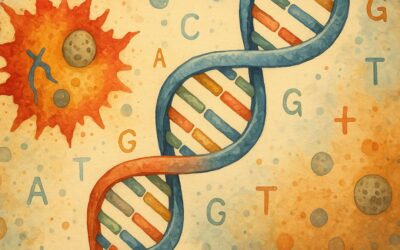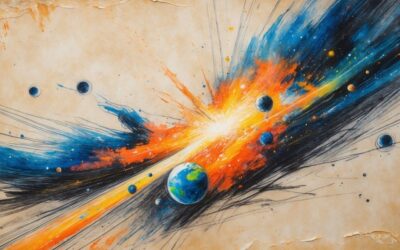In the vastness of the cosmos, nestled on the spiral arm of a galaxy, there is a small, blue planet filled with storytellers. For millennia, humans have told tales, stories that inspire, that provoke thought, that explain the world around them. One such story is about the very beginning of all things, a cosmic tale of incredible power and delicate intricacy. It’s a story of creation, of birth from nothingness, of a singular moment that set in motion the machinery of the universe. This is the story of the Big Bang.
Our journey begins around 13.8 billion years ago. But what does that mean, you may wonder. To put it in perspective, if we imagine the entire history of the universe as a single year, each second would represent about 440 years. The time humans have walked the earth would fit comfortably into the last hour of December 31st. And our story begins on January 1st, at the very first stroke of midnight.
At that moment, all of space was condensed into an infinitely small, infinitely hot point, known as a singularity. This was the stage for the Big Bang. But the Big Bang wasn’t an explosion in space; rather, it was the rapid expansion of space itself. It’s like dots on an inflating balloon, each dot moving away from every other as the balloon expands.
In the tiniest fractions of a second after the Big Bang, the universe expanded exponentially in a period known as cosmic inflation. This expansion was so fast and so vast that it smoothed out the universe, explaining why, wherever we look in the sky, the universe appears the same.
After inflation, the universe was still incredibly hot, a primordial soup of energy. But as it expanded, it cooled, and energy coalesced into particles, into matter. The first particles to form were quarks, which soon combined to create protons and neutrons. Within minutes, these particles began forming atomic nuclei in a process called nucleosynthesis, creating the first elements – hydrogen, helium, and traces of lithium.
For about 380,000 years, the universe was a hot, dense plasma where particles of light, photons, couldn’t travel freely. They were continuously absorbed and emitted by charged particles. But as the universe cooled, protons and electrons combined to form neutral hydrogen atoms, allowing light to travel unimpeded. This moment, known as recombination, gave us the cosmic microwave background radiation, a kind of baby picture of the universe that we can still observe today.
From here, the universe continued to expand and cool. Gravity, the great cosmic sculptor, began its work. It pulled matter together, forming the first stars and galaxies, igniting the cosmos with the first stellar light, a time known as the epoch of reionization. Over billions of years, galaxies gathered into clusters, clusters into superclusters, creating the large-scale cosmic web we see today.
Now, you might ask, “Why is this important? Why should I care about events that happened billions of years ago, in the distant corners of the cosmos?” And it’s a fair question. The beauty of understanding the Big Bang theory lies not just in quenching our curiosity about our origins but also in the profound impact it has on our understanding of the universe and our place within it.
The Big Bang theory is a testament to human curiosity and ingenuity. It’s a narrative built on countless observations, mathematical models, and theoretical physics. It connects us to the cosmos, reminding us that every atom in our bodies was once part of a star that exploded, spreading its enriched guts across the galaxy. As astronomer Carl Sagan famously said, “We are made of starstuff.”
Understanding the Big Bang also underscores the concept of cosmic evolution. It tells us that the universe is not static but dynamic, constantly changing and evolving. It leads us to ponder profound questions about the future of the universe. Will it continue to expand forever, or will gravity eventually win, pulling everything back in a ‘Big Crunch’?
Moreover, the Big Bang theory has direct implications on our technology-driven lives. The study of cosmic microwave background radiation led to the discovery of cosmic background noise, which was vital in the development of technologies like Wi-Fi. Understanding cosmic expansion has direct implications on our comprehension of physics, influencing everything from GPS systems to timekeeping.
Our tale of the universe’s birth is not over, though. Many questions remain. What caused the Big Bang? What’s the nature of dark matter and dark energy, the mysterious substances that seem to shape the cosmos? These questions, and more, are the next chapters in our cosmic tale, waiting to be written by the curious minds of the next generation.
As we look up at the night sky, witnessing the stars and galaxies strewn across the cosmic canvas, we’re not just observers but participants in this grand cosmic tale. The Big Bang theory connects us to the universe, a tale of origins that has been unfolding for 13.8 billion years, a tale in which we, as the storytellers, have the power to explore and understand. And in doing so, we become a part of the very story we are telling, a cosmic story that began with a bang and continues to unfold with each passing moment.










0 Comments